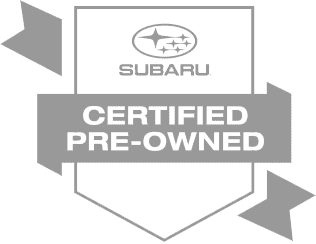

Your vehicle is an investment, and that stands true for your Subaru Outback. With the right care, this SUV may endure more than 200,000 miles. How should you take care of something? A trusted provider who will keep up with regular maintenance. Not only will this help your SUV last for years, but it will also make it easier to sell or trade in your car later on. This post talks about the best way to take care of your Subaru Outback.
Importance of Regular Maintenance
Subaru recommends servicing your Outback every 6,000 miles or once a year, whichever comes first. Some dealers recommend servicing every six months in certain regions, depending on how often you drive and the local conditions. For example, if your roads get salted in the winter, you might need service more often during the chilly months. This helps prevent normal wear and tear issues from becoming larger issues.
Benefits of Following a Manufacturer's Schedule
It's true that Subaru is known for its advanced engineering and high-quality builds, but those things alone aren't enough. If you follow the recommended maintenance routine for your Subaru Outback, it will stay in great shape for years to come. Here are a few of the good things:
- Identifies potential problems early on, which can reduce the cost of repairs over the vehicle's life span
- Ensures the engine, transmission, and safety systems are working properly
- Reduces the risk of unexpected breakdowns
- Helps maintain a high resale value as you'll have documented its service history
- Protects your warranty coverage
- Helps extend the life of your Subaru
- Ensures safer driving and fuel efficiency
Detailed Subaru Outback Maintenance Intervals
RepairPal's maintenance schedule for the Outback outlines 71 service tasks over 150,000 miles. This illustrates the importance of investing in consistent and detailed care to ensure optimal performance and longevity. Subaru recommends specific maintenance tasks at different mileage milestones.
6,000-Mile Service Check
When your odometer hits 6,000 miles, it's time for your first service. This basic service includes:
- Changing the oil and filter to keep the engine lubricated and clean
- Rotating tires for even wear
- Checking the brake system, including pads, rotors, and lines
- Checking the fluids, including refilling oil, coolant, brake, and power steering fluids
- Testing the battery and belts for reliability
12,000-Mile Service Check
At 12,000 miles, the technicians will repeat the same checks performed at the 6,000-mile interval. In addition, they'll also:
- Replace the HVAC system air filter to improve cabin air quality
- Inspect the steering and suspension systems for handling and ride comfort
- Check the clutch for manual transmissions
- Inspect the brake system
18,000-Mile Service Check
At 18,000 miles, you're due for another service. Technicians will:
- Check the battery and charging system to avoid electrical failure
- Replace the brake fluid to prevent corrosion and ensure responsiveness
- Check the coolant system to maintain engine temperature regulation
- Replace the cabin air filter for passenger comfort
24,000-Mile Service Check
The 24,000-mile service is another midterm checkup. This process includes the same items as the prior check-up. You can also take this chance to address any other concerns you notice on your daily commute.
30,000-Mile Service Check
At 30,000 miles, your Subaru needs a more intensive service. Technicians will:
- Replace transmission fluids, which are essential for automatic transmissions
- Change the air filter for engine efficiency
- Check and replace the brake fluids as needed
- Inspect the cooling system, fuel lines, and clutch fluids (manual models)
- Examine and replace the spark plug to maintain fuel efficiency and smooth running
- Run comprehensive engine diagnostics
36,000-Mile and Beyond: Advanced Checks
As your Subaru reaches the 36,000-mile mark and beyond, you'll need a more detailed service inspection. Technicians will:
- Check for suspension wear and tear
- Inspect the steering components
- Examine the drivetrain
- Tune up the ignition system, including spark plugs and wiring
- Inspect the timing belt and replace it at around 105,000 miles
DIY vs. Professional Maintenance
While you can perform some tasks yourself, such as checking your tire pressure or topping up fluids, it's best to trust essential services to Subaru-certified technicians. This includes oil changes, fluid replacements, and brake inspections.
When you visit our Great Falls Subaru service center, you can count on technicians to deliver quality results. These services at an official Subaru service center also help maintain your warranty and improve your Subaru's resale value when you have documented service records on hand.
How To Keep Your Subaru Outback Running Smoothly
Best practice is to adhere to Subaru's recommended service intervals based on mileage or time, whichever comes first. Whenever you get service, keep the records given to you after your vehicle's checkup. This includes details like the service performed, any findings, and results. This also shows a reliable track record of care for your Subaru. Address any warning lights and unusual noises as soon as possible to prevent costly damage. If you're looking for peace of mind with your Subaru purchase, consider prepaid Subaru maintenance plans for added convenience and value.
Schedule Your Next Service in Great Falls, Montana
Following the recommended Subaru Outback maintenance schedule helps maximize your vehicle's performance, safety, and longevity. If you're commuting every day or heading off on an exciting adventure, you want to feel confident about the reliability and safety of your vehicle at all times. Consistent services help protect your investment for years to come, providing you with much-needed security. Ready for your next service? Visit our Great Falls Subaru dealership to schedule your maintenance appointment with a trusted Subaru service center today.
black suv on snow covered ground by Nick Pryde is licensed with Unsplash License



